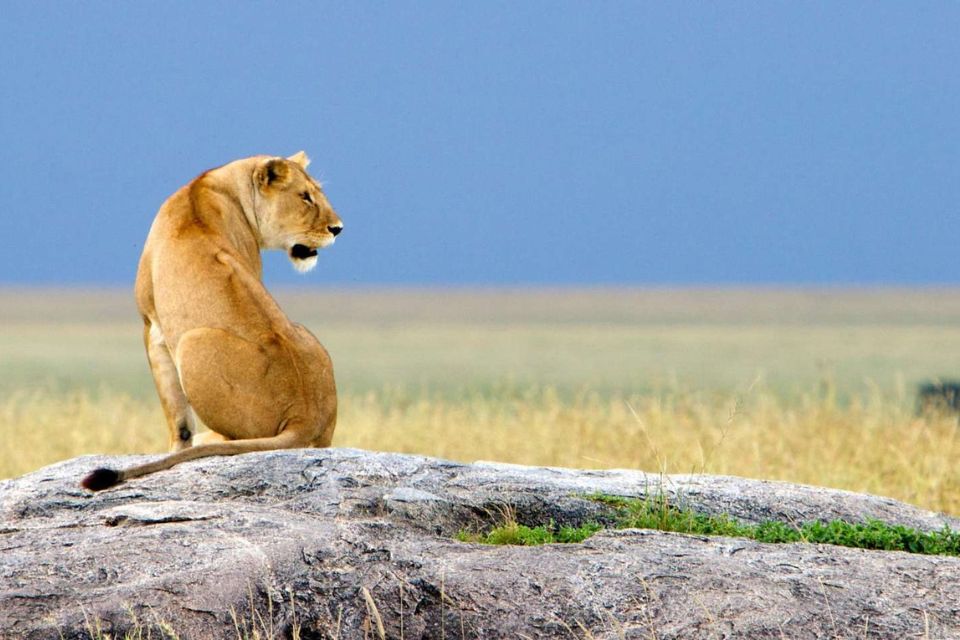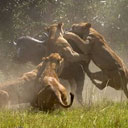Ngorongoro Crater

Ngorongoro Crater
Welcome to Ngorongoro Crater, a mesmerizing natural wonder that will leave you breathless.
Nestled within the heart of Tanzania, this jewel is an unparalleled destination, boasting the title of the largest unflooded and unbroken caldera in the world. Its sheer magnificence is evident as you gaze upon its expansive 20-kilometer diameter, 600-meter depth, and vast 300 square kilometers of sprawling beauty. Step into a realm of extraordinary biodiversity, as the Ngorongoro Crater proudly claims the highest density of wildlife in all of Africa. Revered as the "eighth wonder of the world," this iconic site has garnered global acclaim, attracting a growing number of visitors year after year. While you may encounter fellow adventurers during your exploration, rest assured that the captivating wildlife encounters you'll experience here are unparalleled. Prepare yourself for an awe-inspiring journey through an environment that is truly like no other in Africa.
As the world's largest intact volcanic caldera, the Ngorongoro Crater forms a remarkable amphitheater spanning approximately 265 square kilometers
Its towering walls, reaching heights over 2,200 meters, create a microclimate of their own. From this lofty vantage point, you can witness the tiny silhouettes of animals navigating the crater floor far below. Clouds often embrace the rugged rim, enhancing the dramatic setting throughout the year. And when night falls, be ready for a touch of chilliness—a unique sensation in this part of Tanzania. Venture onto the crater floor and marvel at the diverse habitats that await you. Within this captivating landscape, you'll encounter expansive grasslands, picturesque swamps, enchanting forests, and the shimmering waters of Lake Makat, aptly named "salt" in the Maasai language, fed by the Munge River. These varied environments act as a magnet for wildlife, enticing them to quench their thirst, bask in mud baths, graze upon the lush vegetation, seek shelter, or ascend to new heights. While animals are free to roam in and out of this natural enclosure, the allure of fertile volcanic soil, verdant forests, and abundant water sources tempts both herbivores and predators to remain here throughout the year.
Welcome to Ngorongoro Crater, where nature's masterpiece unfolds before your very eyes. Prepare for an extraordinary journey into a realm of unmatched beauty, where wildlife thrives and landscapes captivate. Your experience here will be etched into your memory forever, as you become one with this extraordinary testament to Earth's wonders.
Best Time to Visit
The best time to visit Ngorongoro Crater depends on your preferences and what you hope to experience during your visit. Ultimately, the choice of when to visit Ngorongoro Crater depends on your personal preferences and priorities. Consider factors such as weather, wildlife viewing opportunities, and crowd levels when making your decision.
Here are some factors to consider when planning your trip:
Dry Season (June to October):
This is generally considered the best time to visit Ngorongoro Crater. The weather is dry, with clear skies and minimal rainfall. The vegetation is thinner, making it easier to spot wildlife, and the animals tend to gather around water sources, offering excellent wildlife viewing opportunities.
Wet Season (November to May):
The wet season in Ngorongoro Crater brings lush green landscapes and is a time of plenty for animals. It's a beautiful time to visit if you enjoy the vibrant colors and the possibility of witnessing newborn animals. The scenery is stunning, and there are fewer tourists compared to the dry season.
Migration Season (December to March):
During this period, the Great Migration of wildebeest and zebras occurs in the nearby Serengeti. While the migration itself doesn't take place within the crater, it's still possible to witness large herds of animals moving towards and away from the crater's vicinity.
Activities
- Wildlife Viewing
- Bird Watching
- Cultural Tours
- Nature Walks
- Hiking
- Photography
- Visit Empakaai Crater
- Game Drives
Related Safari Package
TAILOR MADE HOLIDAY
IT’S TIME FOR YOUR TAILOR-MADE DREAM HOLIDAY IN AFRICA!
Testimonials
Customer Reviews.
Regardless of your situation, we can help you exit your comfort zone, like we’ve done for other people. Hear what some of them have to say:
Getting in touch is simpler than ever
Leave us your email address and we contact you back




